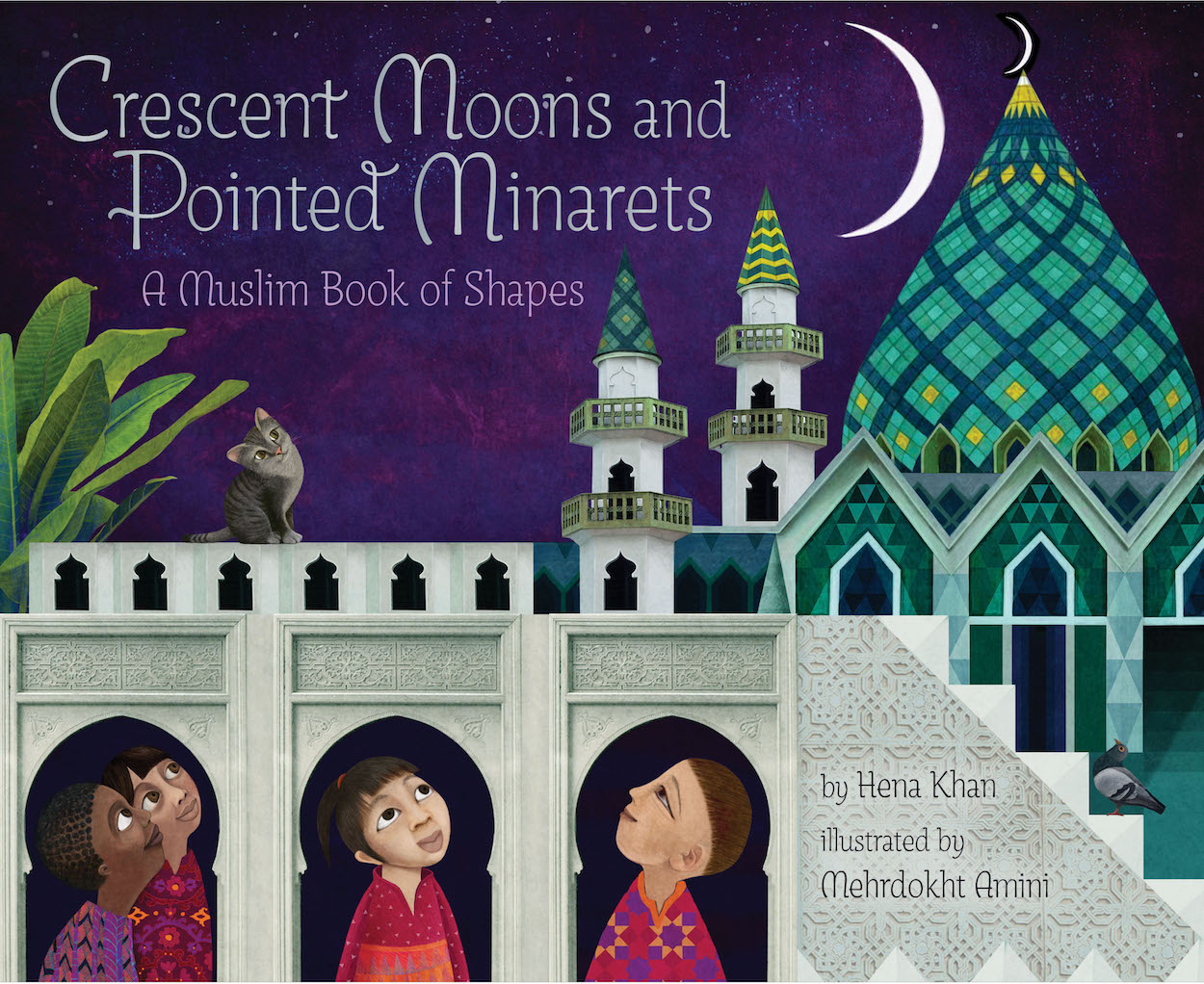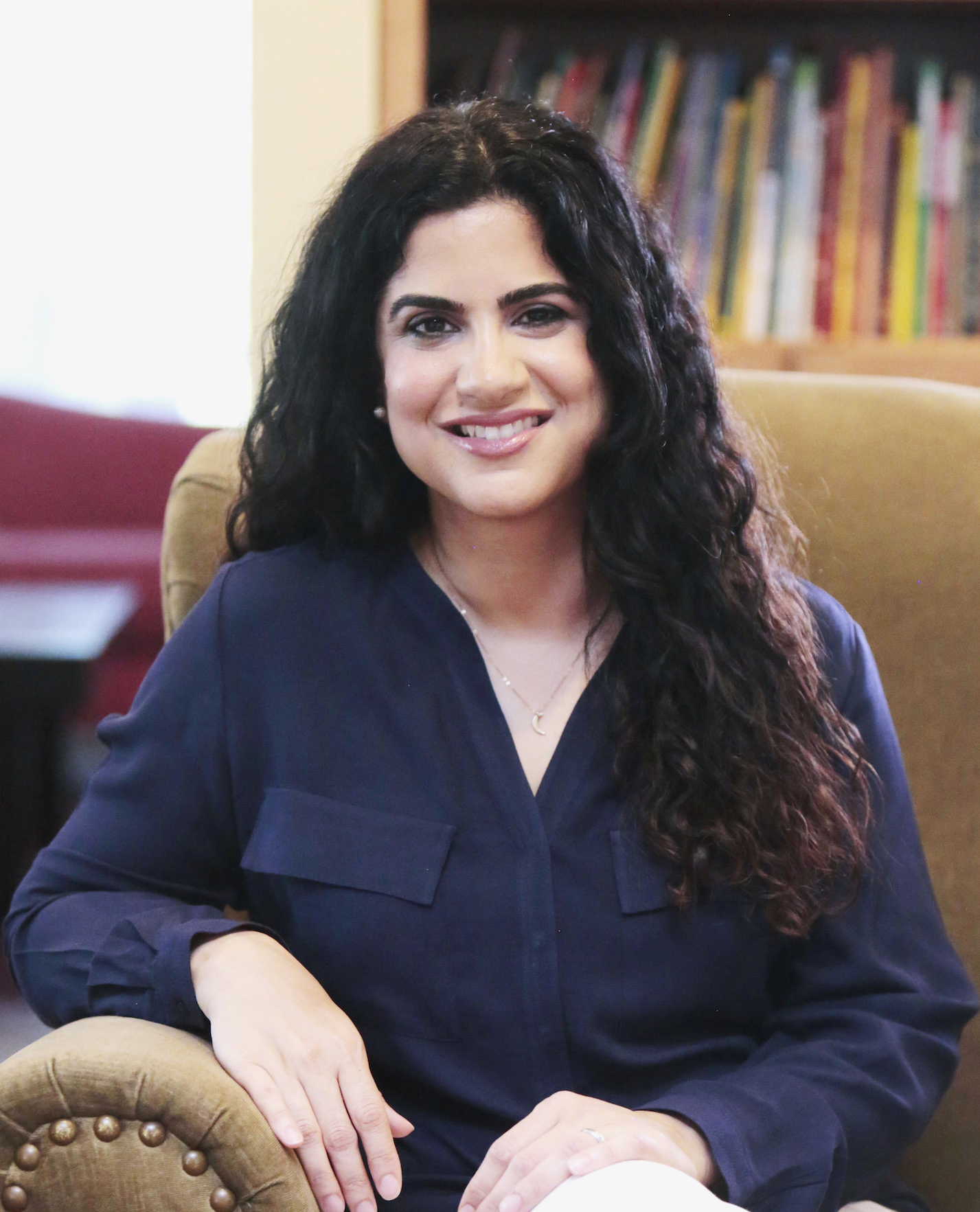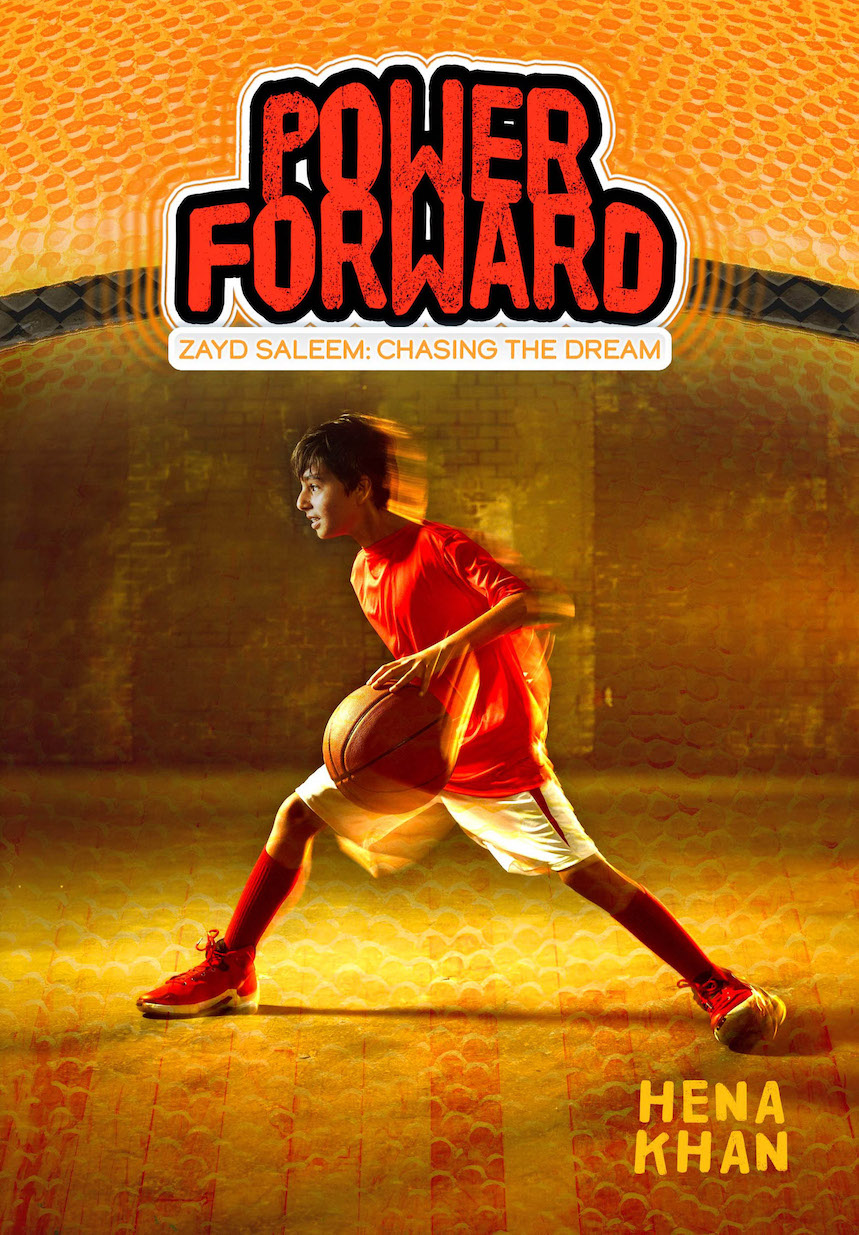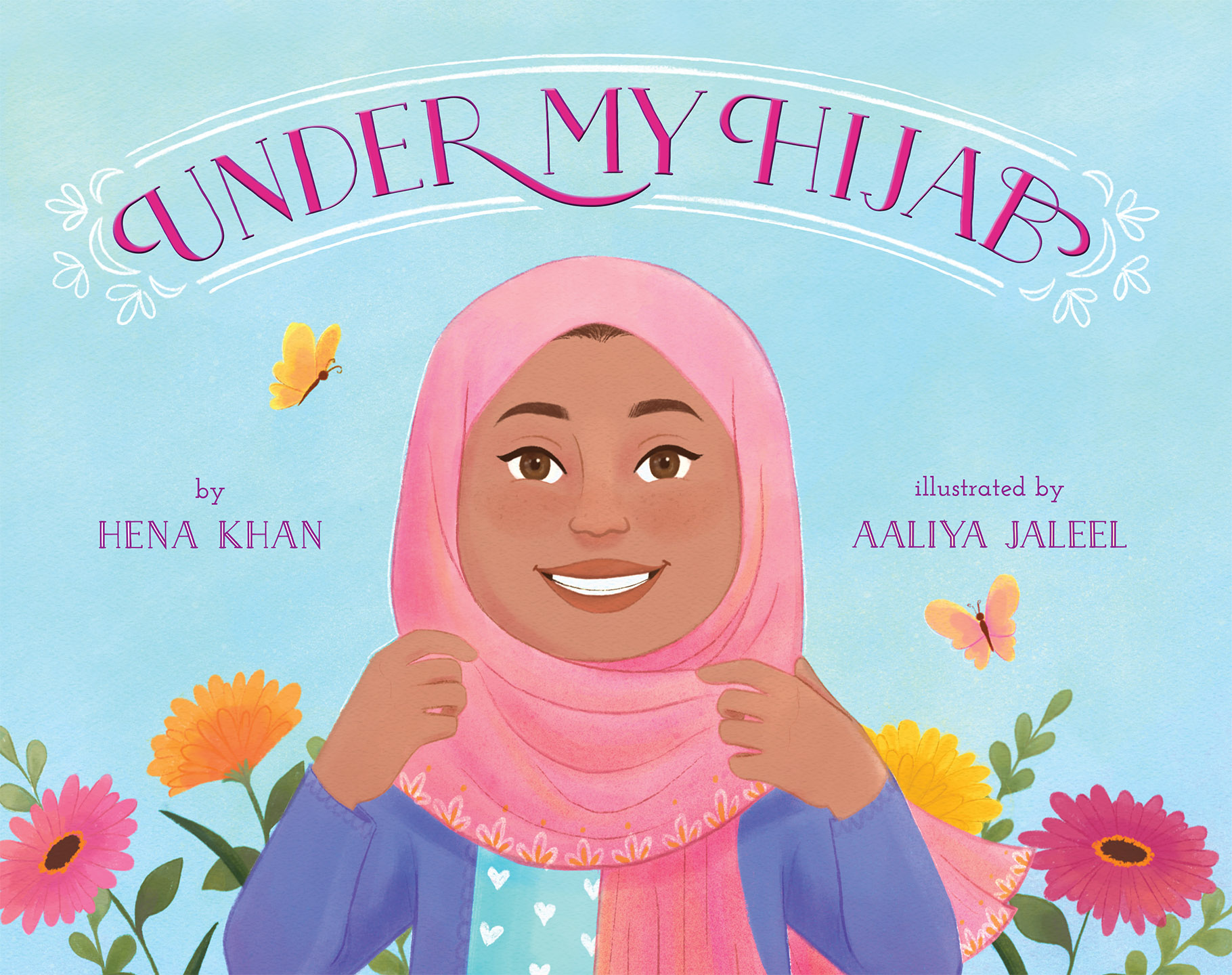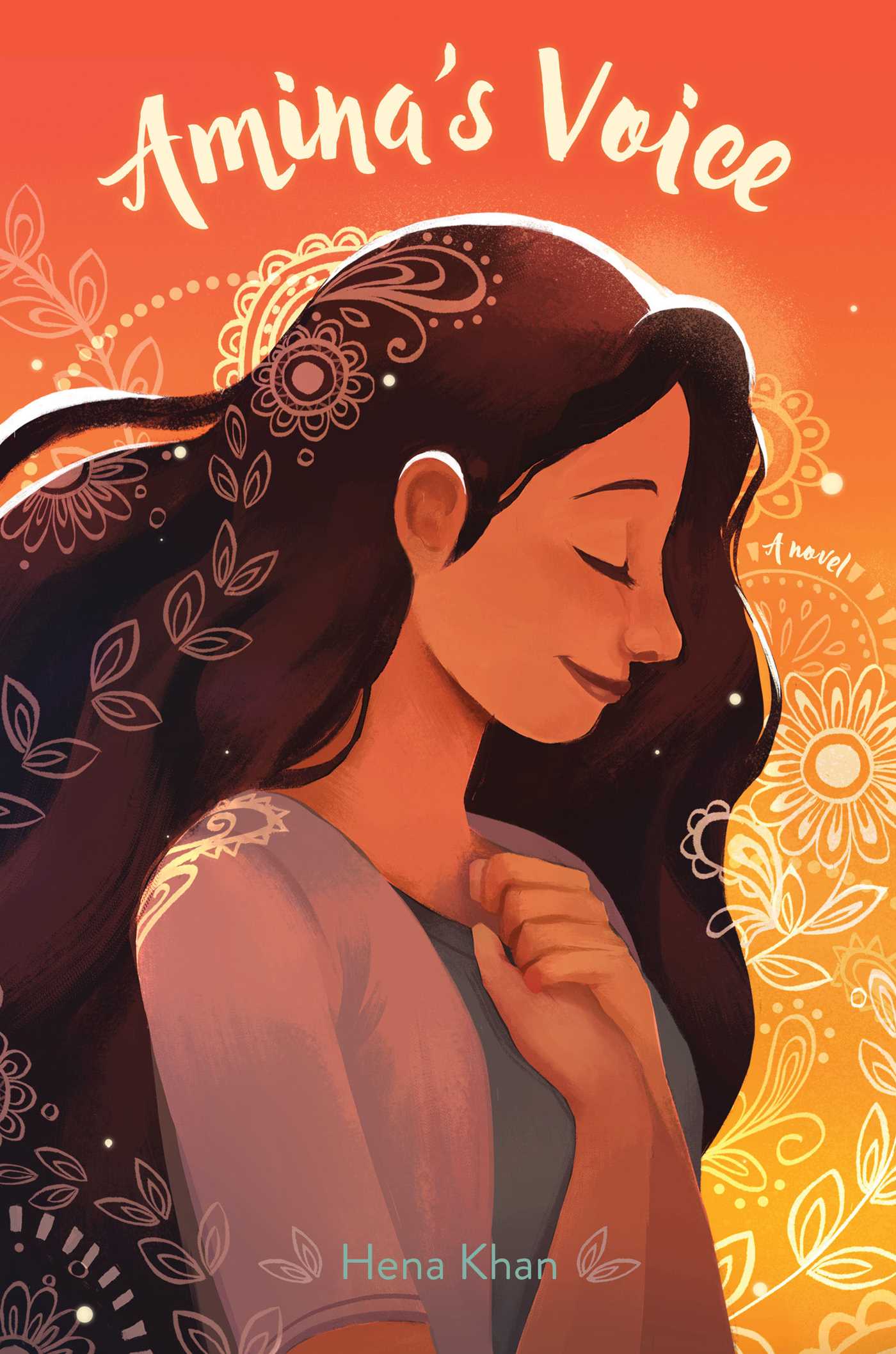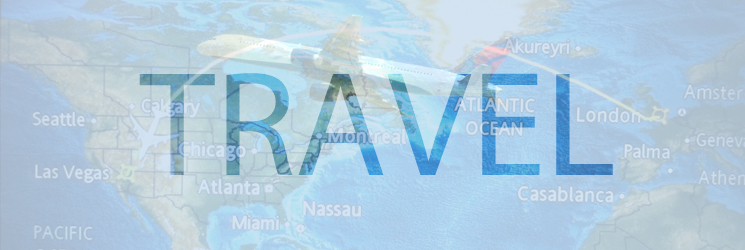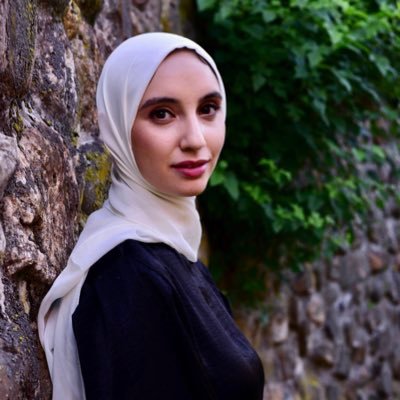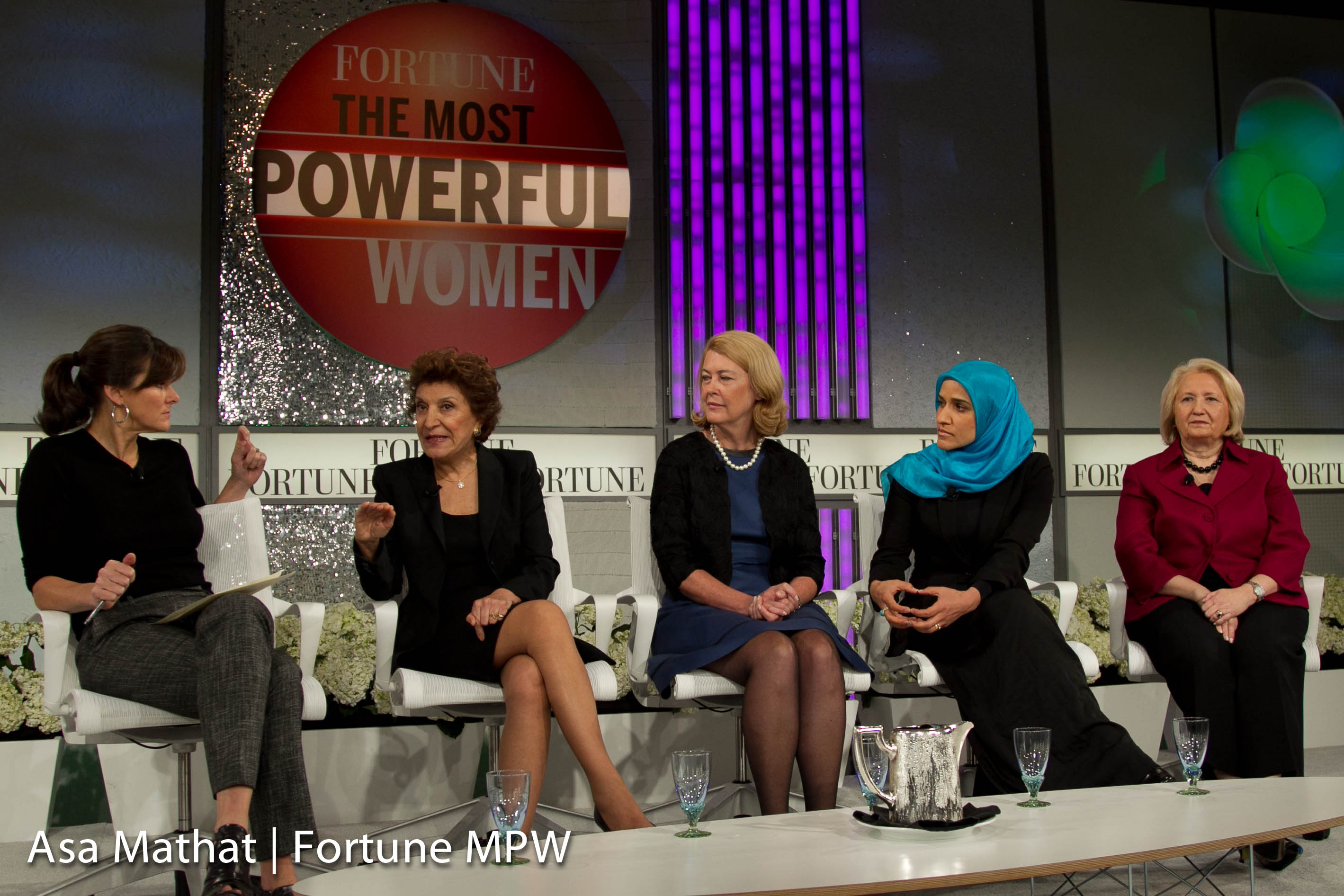Hena Khan has written a series of colorful, inspiring books that connect with children across the world and share the stories of Muslim characters. altM’s Asma Uddin spoke with Hena about her writing journey and what she’s learned from it all. Also check out altM’s previous interview with Hena.
Asma: Hena, welcome back to altM! Our first interview with you was in 2012, when you had come out with Golden Domes and Silver Lanterns and Night of the Moon – both books geared toward American Muslim children.
In the years since, your writing career has really taken off, and we are so thankful for that. Can you walk us through some of those writing adventures—the Curious George book, Amina’s Voice, and others?
Hena: Thanks for having me back! I’ve been so grateful to have the chance to share more stories with audiences since my first two picture books came out. Writing It’s Ramadan, Curious George, and seeing the tremendous reception that it got was definitely an adventure! It was so exciting to see how much it meant to people to finally be included in literature in a way they hadn’t been before, even in a simple board book format. The overwhelming response took the publisher by surprise as they scrambled to meet demand and it even earned me the distinct honor of being #1 in the Children’s Ape and Monkey Book category on Amazon (that’s actually a thing, not a joke!).
Asma: What a fun category and a true honor!
Hena: Honestly, the reaction to Amina’s Voice has been an even bigger honor, since it was my first novel for kids and tweens, and the book that launched Salaam Reads, a new imprint created by Simon & Schuster. I wanted to write the story that I would have read when I was young, one centered around friendship, family and community, with a relatable protagonist who is a Pakistani American Muslim. Apart from Amina learning to navigate middle school and finding confidence, the book takes readers to an Islamic Center, which is a big part of the story. I wanted to give non-Muslims a chance to see what our mosques and communities are really about. I’ve been thrilled to see the book get so much love and be read widely, to have it on many “Best of 2017” and state reading lists, and to hear what it means to readers of all faiths and backgrounds. Thank you to everyone who has told me they have connected with and enjoyed the book, and even read it several times, which is the ultimate compliment for me!
Last year, I was able to publish a series I had a blast writing, called Zayd Saleem Chasing the Dream, featuring a boy modeled after my own sons. The series includes three books that highlight a boy who loves basketball, but it’s got a lot more than sports in it. The stories showcase his extended family (especially his adorably opinionated grandmother who is inspired by my mom), desi culture and traditions, friendships, and personal growth, all in a funny and fast-paced format. I got to examine culture from the perspective of a third-generation American Muslim and throw in humor and silly situations, too. I think all of our kids deserve entertaining books where they get to be the heroes and deal with the everyday challenges of being a kid, and not just heavy or oppressive themes.
Asma: That’s really fantastic. It looks like you’ve got something for every kid—the adolescent girls, our young boys, and our littlest readers. When my two older kids were learning how to read, they practiced nightly with Golden Domes and Silver Lanterns. Tell us more about the sequel.
Hena: That is so lovely to hear! I was excited to publish the sequel, called Crescent Moon and Pointed Minarets, last year. It’s a gorgeously illustrated picture book that introduces shapes and things that are special to Muslims as it takes you on a trip around the globe. Readers get to see different cultures in the Muslim-majority world and beautiful Islamic art and architecture. I’m so lucky to have worked with an amazing artist like Mehrdokht Amini and to see her career really take off since our first book. Alhumdulilah, it’s been a busy few years, but really wonderful, too. One of the best parts has been sharing my books with audiences and meeting readers across the country during school visits, festivals and conferences.
Asma: Let’s back up a bit to your experience writing a Curious George book. What was that like? I mean, he’s a classic!
Hena: It definitely felt a bit surreal! At first, when the editor got in touch and told me their idea for the book asked if I was interested, I was a little confused. I was like, “So is George . . . Muslim? Or the Man with the Yellow Hat?” We agreed that George and the Man would celebrate Ramadan and Eid with their Muslimfriends, and that’s how I wrote it.
I was a little nervous when I thought about the enormous legacy of George, and definitely wanted to stay true to his spirit, and that’s why I threw in the shoe mishap at the mosque. Mostly I was just excited to get to write this book and be connected to George! And I was grateful for the chance to highlight the values I wanted to shine through the book, like my others—family, community, charity, and the fact that Muslims are American.
It was funny, when the book came out, I got a bunch of unexpected media attention and was on NPR, my local morning show, in The New Yorker and several newspapers. And a question I got more than once was why I included pizza in the dinner scene. I actually had to explain that Muslims eat pizza, that there’s often pizza at iftaar parties. But it made me realize how important it is that we aren’t always seen as foreign, immigrant, or otherwise “other” since that reinforces ideas many people have. I’m grateful that George can help people get to know Muslims, and it’s amazing how validating this simple little book has been for so many. I was very moved by people telling me how much they wished they had a book like it growing up or that they were buying it for their grown children because they felt it was so important.
Asma: Your latest book is Under My Hijab, and it looks like it’s getting quite a bit of attention among local audiences and the press. Can you tell us more about what you sought to accomplish with that book and the type of responses you’ve gotten to it?
Hena: Yes! I wanted to write the book for some time, to celebrate the women in my life who wear the hijab and offer some positive representation, which has been sorely lacking. The book features women who are educated, smart, independent, accomplished, stylish and diverse, and who are not limited in any way by their headscarves.
I also wanted to answer basic questions that many women and girls who wear the hijab often face, like “do you have hair under there?” or “do you sleep with that?” or “how do you shower with that?” My Author’s Note explains a bit about the practice in very simple terms that a young reader can grasp, and points out that not all Muslim women, including me, wear it (something I realized recently was a misperception some have).
The reaction to the book has been amazing, even better than anticipated as evidenced by the fact that the publisher Lee & Low is rushing a second printing (please continue to order it and it will ship soon!). I think parents and educators have embraced the story as a teaching tool, since it addresses a topic many don’t know how to approach and are curious about. Muslims have also been very enthusiastic about seeing a warm and affirming book about the hijab. And I think Aaliya Jaleel’s illustrations are perfect in the way they are contemporary and accessible. Everything feels very American and familiar and gives you a cozy feeling. I’m so happy with them!
As someone who doesn’t wear the hijab, this is a story I felt I could write, from an observer’s point of view rather than a story about the experience of wearing the hijab. I’m glad to see more books coming out that address the topic, from different perspectives, since people are eager to have them!
Asma: You’ve been writing for quite a while now. What are some lessons you’ve picked up along the way – about writing, about connecting with audiences, about the needs Muslim kids and parents have?
I think it’s really important to know your audience and to write from the heart, two enormous clichés, but let me explain: In my writing, I have always wanted to share the beauty of Islam with the world including people outside of the faith, while representing Muslims at the same time. But that meant envisioning my books in a public school library and making sure they were appropriate for that particular setting. A lot of writers struggle to identify their audience, but you’ll have a stronger product if you know who it is beforehand and write with it in mind. It helps a lot to know the genre you are writing really well, too! If you want to write for children, make sure you read and study a lot of children’s books and take note of what works and what doesn’t, for example.
I’ve also wanted to stay positive in my writing and give Muslim kids a chance to feel proud of who they are, in a time when others are trying hard to make us feel the opposite. We hear so many negative things about Muslims in the media and in pop culture, and we are linked to some really terrible and depressing narratives around terrorism, war, oppression and more. I think it’s important to ask yourself as a writer what you’re doing to challenge those narratives, and in my heart the best way to do that is to offer completely different ones. Let’s not fall victim to our own stereotyping and only make stories that live in those spaces. Yes, those things are part of our reality. But we are so much more than that, and our kids need to see themselves as more than that. Write the story that would have made you feel happy and proud as a child to read.
Asma: That’s such an important message, and I’m so glad you have found so many channels to get that message out. What’s next for you?
Hena: Thank you! I’m super excited to share my next middle grade novel with the world. It releases on September 3rd and is called More To The Story. It’s inspired by my favorite book of all time, Little Women, and features four Pakistani American Muslim sisters living in Atlanta. For those who loved the classic, you’ll find parallels in the characters’ personalities and some of the plot lines, but with a fresh take. I can’t wait to hear what people think of it!
I’m also just starting to work on a sequel to Amina’s Voice! I always thought that there was more to herstory, and I’m excited to write it. I hope to have that out next year.
Plus, I’m working on another book in the concept series, to follow Golden Domesand Crescent Moons.Many of you have suggested numbers, so it’s happening too, inshallah!
I’ve got another chapter book I’m working on with Adam Gidwitz coming up as part of the Unicorn Rescue Society, and another picture book that is inspired by the Qur’an. Please connect with me on social media or my mailing list to stay up to date on new publications!
Asma: Any chance you’ll move into adult fiction at some point?
Hena: I suppose there’s a chance, but for now I’m loving writing for kids and don’t see myself writing for adults anytime soon. I connected with books deeply as a kid and I consider it a privilege to help shape kids and be a part of their childhood. I’m tremendously honored to have my books in the homes of families, hearing that they are part of traditions around Ramadan and Eid and seeing the loveliest displays and baskets, and more. This space, and writing for kids, is where I want to stay for now!

